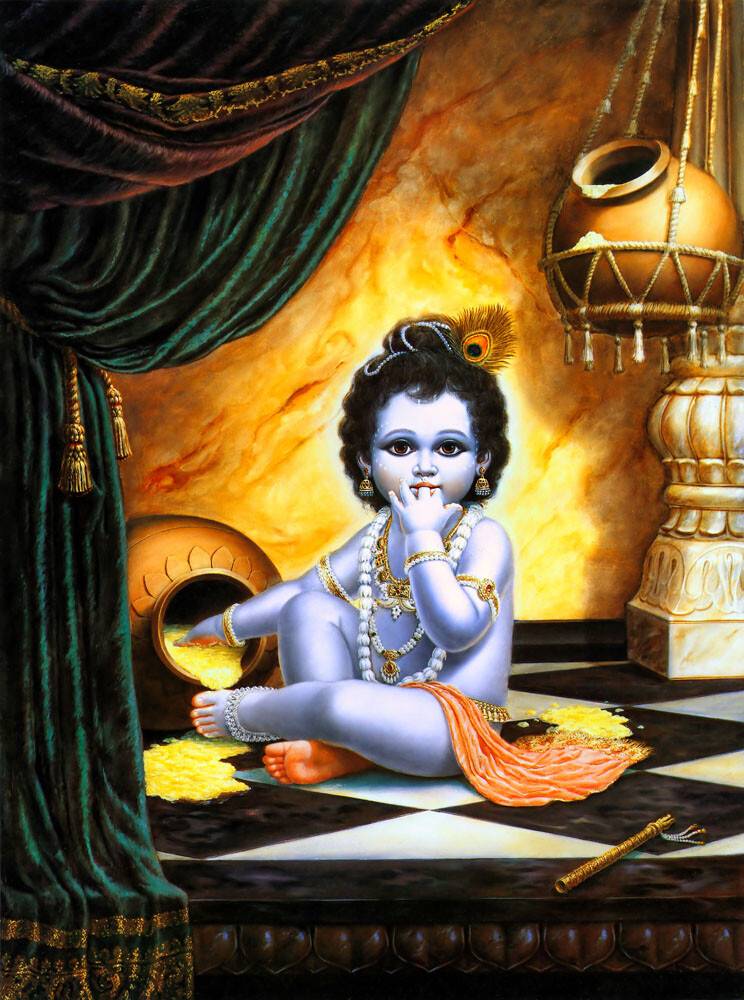- Edited

The gross world is defined in the scriptures as a mixture of the five subtle elements - viz. Space, Air, Fire, Water, and Earth. The Creator and The undisputed Lord of the World are called Īśvara, his power (śakti) is Māyā.
The process of creation (subtle) is explained as: Before creation, this whole universe was dormant in Brahman, like the tree in a seed. In this state, Brahman is known as Paraśiva. Then a desire to create arose in the Brahman creating a movement-like (spanda). In this state, Brahman is known as Śiva and the creative urge is called Śakti. Influenced by Śakti, his inherent power, Śiva now ponders on the manner and mode of creation. A grand master ‘plan’ is drawn in his ‘mind’ for the execution of the above. Śiva in this state is called Sadaśiva and his activity is called Śuddhavidyā. He executes the plan and creates the five subtle elements first. Now in this state, Sadāśiva is called Īśvara and his activity is called Māyā. One-half from an element with four - one eighth from the rest, elements are mixed to create the gross elements and thus the gross world is born.
A simile may explain this: Consider the attempt to draw a picture of Lord Ganesh by an artist. Initially, he would be without any activity concerning this particular attempt. This is the Para Śiva state. The desire to draw is the movement called Śakti and he is now Śiva. He will now visualize the form of Lord in his mind - viz. Elephant face, big ears, four hands with their weapons, vehicle, etc. vividly in his mind. This is Sadāśiva state, a picture is inherent in him; there is no difference between him and the picture. This identity is śuddha vidyā tattva. When he executes this visualization and draws a picture, we find that this picture simultaneously exists outside him and also inside him. This is Īśvara state and this duality-non duality is Māyā tattva.
Another example is that of dance and the dancer. The movement of the head, body, and feet is dance. When this movement ceases there is no dance and that person will not be called a dancer. So we find that dance is identical to the dancer. Likewise, this creation is a joyful expression of the divine like the said dance and the creator of the dancer. The identity between them is called ‘śuddhavidyā’.
The creative urge called śakti now becomes a base for creation and is called prakṛti. The three Gunas (sattva, rajas, and tamas) are inherently equi-balanced in prakṛti. When sattva predominates then it is called Māyā and when it is at the lowest ebb, it is called avidyā. So Īśvara whose śakti is Māyā - wherein a predominance of sattva is there - will not have a veil of his omnipotent/omnipresent nature. When he is bound by (a)vidyā and forgets his true nature he is called Jīva. On the constant practice of Japa of mantras and navāvaraṇapūjās, we seek to establish permanently in this consciousness of sādhaka the identity of Creator, universe, and individual which is called the Śuddhavidyā tattva.
Source: "Meditative Texts - Revised Thoughts on the Way" by Yogamba Sameta Atmanandanatha (Ramesh Kutticad)
Yogamba Sahita Atmanandantha (Ramesh Kutticad) is a Śrī Vidyā Guru from Chennai. He is associated with Guruji since 1996. Smt. and Sri Ramesh have painstakingly written the following scholarly, research. We're grateful to him for allowing us to make these articles available for the public.


